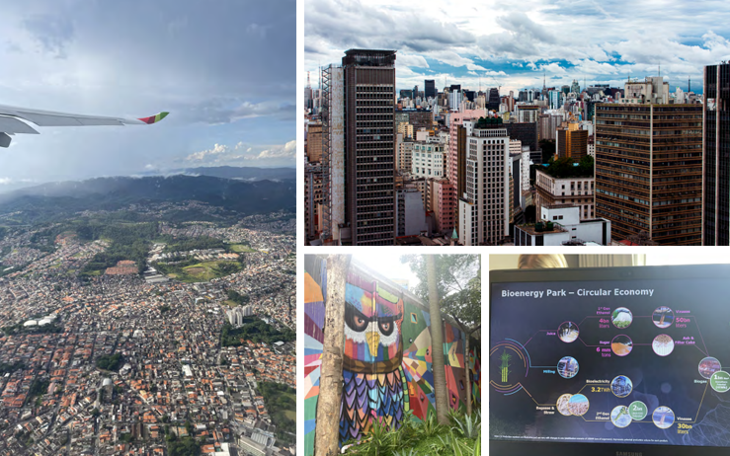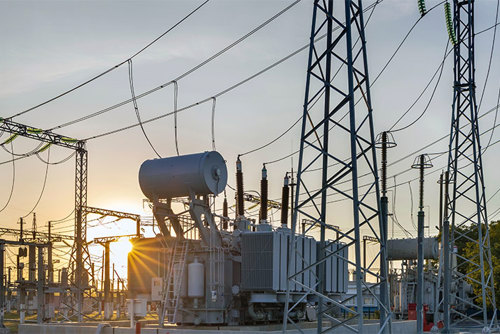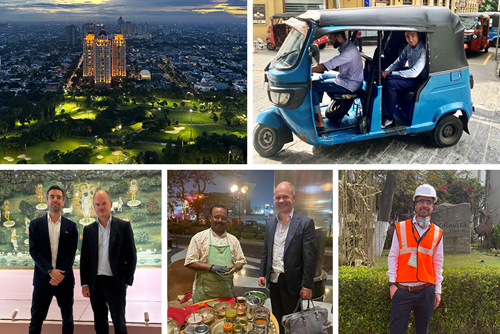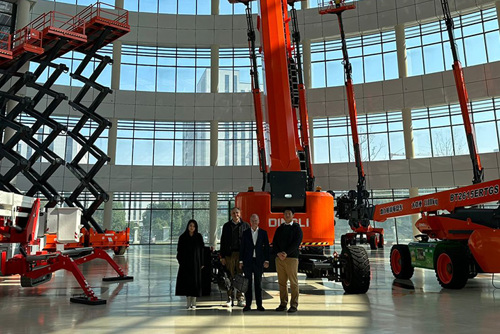
We spent the last few days in São Paulo where we met over 20 companies across a diverse range of sectors from blade manufacturers for wind turbines to fintechs to emergency response specialists. We have five key takeaways which will drive our portfolio allocation decisions in Brazil going forward.
1. Brazil is a truly unique country blessed with abundant natural resources (fertile land, rain, sun, wind, metals and fossil fuels), a smart and educated workforce and an enormous range of listed companies. At the same time, it remains something of a classic “emerging market” in the sense that politics remain a key driver of stock returns and (depressed) company valuations. The election of Lula in November – itself remarkable given he has served jail time for corruption - has significantly increased uncertainty regarding fiscal and even monetary policy. At the same time, all other key figures have issued much more moderate, market-friendly statements – for example the new Finance Minister repeatedly insists he will ensure fiscal discipline. Hence, all eyes will be on the new fiscal rule and taxation framework to be presented in March. The government needs to find a compromise between increasing spending to meet Lula’s social objectives and raising taxes to ensure the budget deficit remains manageable – this will not be an easy task.
2. Local investor sentiment is staggeringly poor. Without exception, the entire local investment community is incredibly negative due to the political backdrop, even though nothing concretely bad has happened. This is partly due to the investors’ time horizons, with one CFO joking to us that “long term investment for Brazilian investors means 30 days”. However, it is also because these local investors have witnessed, first-hand, just how quickly things can get really bad. We believe that a worst-case scenario (like Turkey or Argentina) will not materialise, partly as Lula does not have clear control of the Congress, and will not be able to pass more radical legislation. As such, there is considerable upside from current levels.
3. Agri stocks in focus. Brazil is the world’s largest soy producer (with a market share of above 50%) and among the top five in many other products such as sugar (20%) and biofuels (27%). Agriculture is a notoriously difficult sector to analyse, because both prices and volumes are subject to global weather patterns (among other factors). However, biofuel is clearly an interesting area, offering 40%-86% lower life-cycle emissions than petroleum diesel, taking into account land-use change estimates1, and could be a solution to some hard-to-decarbonise areas such as air travel. Brazil has the world's largest fleet of cars that can use biofuels, with ethanol produced from sugar canes representing almost 50% of total fuel demand. More generally, from a sustainability perspective, agriculture is one of many sectors that highlights the inherent conflict between the SDGs – while feeding the world is unquestionably important, it is very difficult to do so on a large scale without impacting biodiversity.
4. Fintechs undressed. Some of the most fascinating meetings were previous investor darlings like Stone and Nubank. These companies have fallen 89% and 55% respectively below their peak stock prices in 2021, with the performance differential representing somewhat of a separating of the wheat from the chaff. Indeed, with the benefit of hindsight, it does seem a bit difficult to believe that there was quite so much hype around certain companies. For example, Stone’s income comes from acquiring (i.e. facilitating payments for merchants) – a competitive and not particularly exciting market where the company currently has 12% market share. The company spent most of the meeting emphasising how they had completely overhauled their board and management team to more closely represent that of the incumbent banks they are supposed to be disrupting, and that they have hired extensively from them. We avoided investing in these companies on valuation grounds, and going forward we do not see why they should have very significant premia to well-managed growing companies in other sectors.
5. Caveat emptor. The investment community is currently reeling from the largest corporate fraud case the country has seen, Lojas Americanas. The company was a well-regarded retailer with highly reputable owners and a market cap of above USD 2bn – current market cap is USD 200m. While this would have been hard to spot, we met plenty of companies which are down 50-70% in the last few years as the result of consistently and spectacularly missing earnings guidance. There are several systematic reasons for this (typically inflation / supply chain issues) though some of it does appear to come down to unwarranted optimism on the side of management but also strong competition across all segments. In financials, the downturn in the credit cycle seems to have hit banks in different ways, with certain banks posting huge earnings misses as loan quality deteriorates while other banks remain relatively unscathed.
We believe Brazil will remain one of the most volatile markets in which we invest, but it is also one that offers very good opportunities for long term investors, such as ourselves, given the exceptionally poor sentiment and hence depressed valuations. This is especially true given the strong tailwinds from China’s reopening which will increase demand (and likely prices) for the key commodities that Brazil exports. This includes iron ore, where prices are up over 50% since November 2022, and also copper. The market is trading at 9.1x forward P/E (excluding Petrobras and Vale), more than one standard deviation below its historical average of 12.5x.
For the time being we remain focused on high-quality companies where we have very high visibility on earnings and that are relatively immune to the political cycle. One example is WEG, the “Siemens of emerging markets” which is benefitting from the energy transition (something that is picking up steam under new president Lula) whilst maintaining margins. Even in 2022, which was a difficult year for industrial companies, EBITDA grew 20% with a 19% margin leading to ROIC of 29%.
Following our on-the-ground analysis we will also most certainly add one or two of the more interesting (and completely overlooked) companies we met. One such example is a high-quality waste management company that also provides international emergency response services. It is trading at 5x EBITDA for this year, despite expected EBITDA growth of 26% - in June 2021 it was trading at 18x EBITDA. Since this time, EBITDA estimates for 2023 have increased by 156%, so there has been no deterioration in fundamentals.
Share
Documents & links
Share




